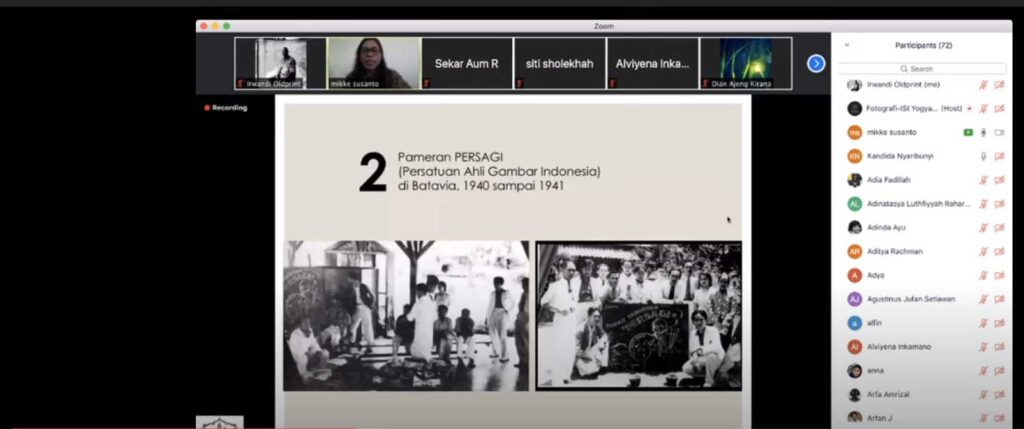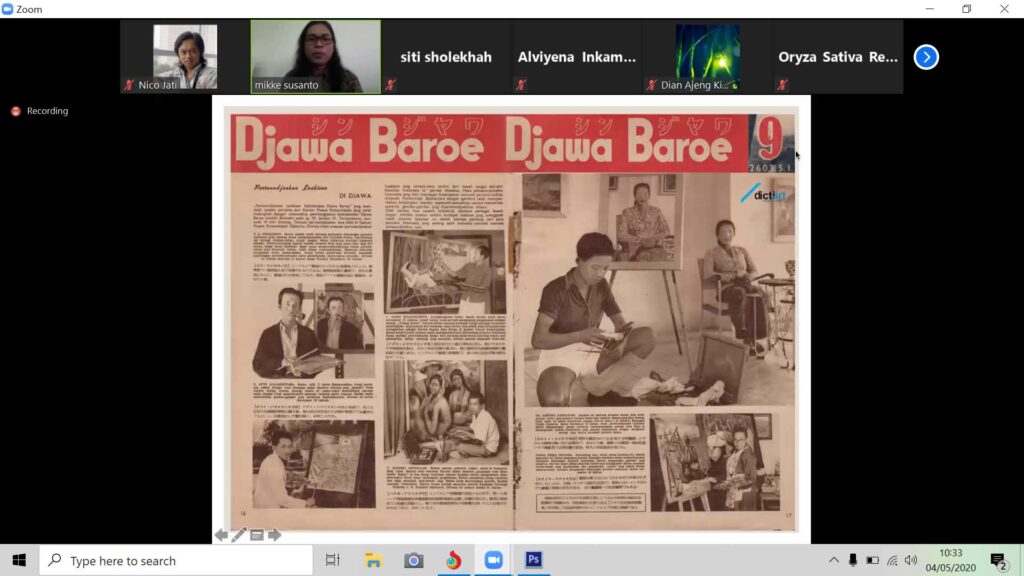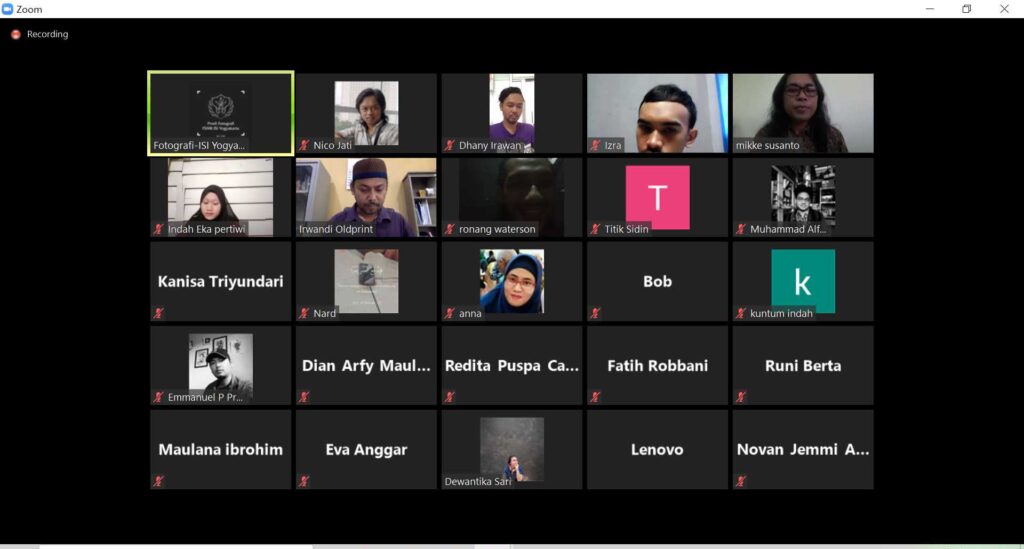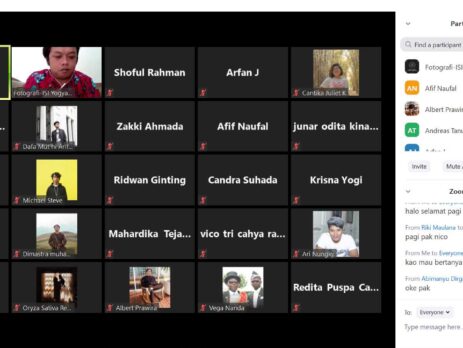The Curatorial Class Online Sessions #3 and #4 organized in collaboration with the Photography Study Program, Faculty of Recording Media Arts (FSMR) and the Art Management Study Program, Faculty of Fine Arts (FSR)7, Institut Seni Indonesia (ISI) Yogyakarta have taken place. In the #3 online session, Dr. Mikke Susanto, M.A. presented material on curatorial practices. While in the online session #4, the material presented was about important exhibitions in the history of art in Indonesia.
On curatorial practice, Dr. Mikke Susanto, M.A. emphasized the curatorial ethics that curators must have today. These include a fair approach to each artist, avoiding conflicts of interest, and maintaining the trust given by the artist. It is also important to have thorough discussions about financial agreements, power issues, and gossip networks that could potentially influence the exhibition and curatorial work. He also explained that curatorial practice has a very broad scope, not only in the realm of art and museums, but can be practiced in other areas outside of art such as government institutions to manage art collections. However, curatorial practice and the presence of curators are also needed in various fields such as education, cultural heritage management, zoo management, and so on.
In his presentation on important exhibitions in the history of art in Indonesia, Dr. Mikke Susanto, M.A., recounted and explained about curated exhibitions from 1900 - 2000s as part of history and a form of curatorial practice that is recognized by the public. Since the colonial era, art exhibitions have been held in Indonesia. The birth of a forum for art activities, which was later named as Bataviasche Kunstkring in Jakarta. Bataviasche Kunstkring then became the center of art in Indonesia at that time. Hundreds, even thousands of exhibitions were organized.
Along with the times, art exhibitions began to develop and some of them made history as exhibitions that were able to break the establishment of the art world. For example, an exhibition that eventually became the forerunner of the Indonesian New Art Movement. There are even exhibitions that leave historical archives that can be enjoyed to this day.
The #3 and #4 Online Session Curatorial Lectures also sparked high enthusiasm from various parties. This was realized from the participants who came from various regions in Indonesia and from various institutions. The Head of the Photography Study Program, FSMR, ISI Yogyakarta, Dr. Irwandi, M.Sn., revealed that this online session curatorial class is a form of cross-departmental learning practice to develop artistic insights for anyone who needs it. The hope is that young curators will emerge who will color the history of art in Indonesia and even the world.

The #3 Curatorial Class which lasted approximately two hours was moderated by Adya Arsita, S.S. M.A. with speaker Dr. Mikke Susanto, M.A. (Head of the Art Management Study Program, Faculty of Fine Arts, ISI Yogyakarta).

Indonesian painters began to independently organize exhibitions, which can be considered as the forerunner of a simple exhibition by the Association of Indonesian Painters (Persagi) in 1940-1941 in Batavia, pioneered by Agus Djaya and Soedjojono.

Photographs showing the process of painting for a daily were actually part of Japanese propaganda.

Participants of the online session curatorial class took a group photo using the Zoom Meeting facility after the lecture was over.





